Valeria Mamczynski
In recent years several projects have been carried out to conserve and restore the stained glass windows in the Museu Nacional’s collection, which I began to discuss in a previous article. In this second article I shall continue to look at the restoration of these stained glass widows:
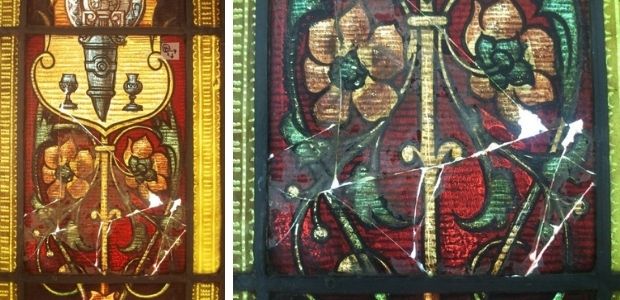
Treatment for joining broken pieces of glass together
The case we are looking at is that of stained glass windows removed from their original setting, as occurs with the works that are part of the Museu Nacional’s collection, and which are taken to the restoration workshop to be repaired. If the broken glass does not entail the loss of original material, the fragments can sometimes be stuck together without having to remove the lead, although the best option is to join them together free of the lead strips. Therefore, after taking photographs, writing the report on the state of preservation, the deterioration maps, the diagnosis and the proposal for intervention, the first step is to remove the broken glass pieces from the lead strips surrounding them. The procedure is more or less laborious depending on the adherence of the lead, the situation of the fragment and its morphology.
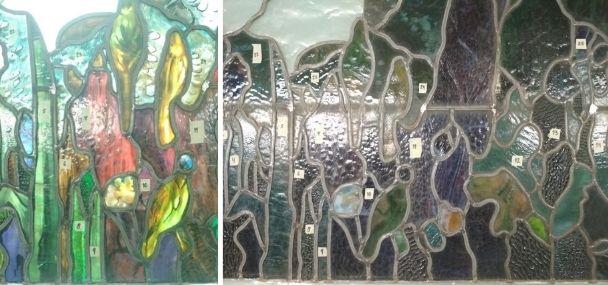
The lead cames are shaped like an “H”, inverted or laid horizontally. The piece of glass is surrounded by the “core” of the lead (the central part) and held in place by two flanges, above and below the surface of the glass (of just a few millimetres). The lead cames are soldered to one another, thus creating a framework of lead and glass that makes up the stained glass panel.
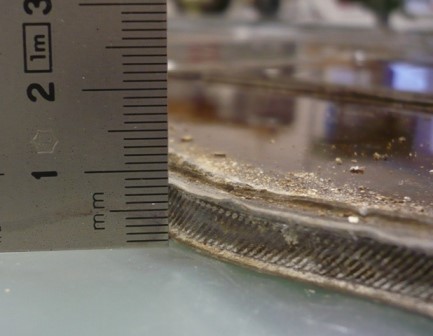
To remove the broken pieces of glass from the lead cames we have to melt the solder on the surrounding cames and raise the flanges 90 degrees. Lead is a very malleable material and it must be treated delicately so that it does not break and so as not to leave marks on it during handling. This is a very laborious process, which takes a long time and is always done from the back, the side with no pictorial decoration. When all the flanges have been raised, the broken fragments can be removed easily.
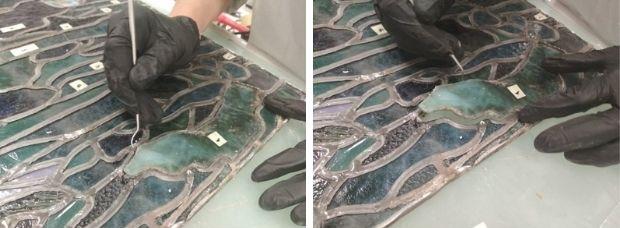
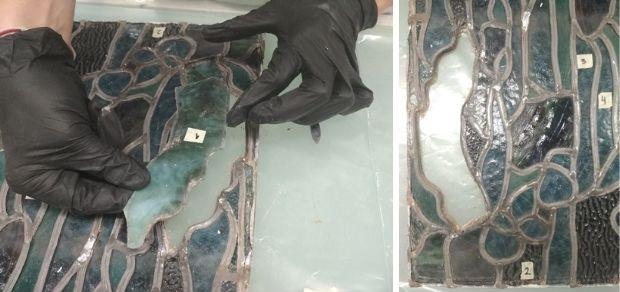
Upon beginning the process of conservation-restoration of the Allegory of the Fine Arts Exhibition a large number of double glass pieces were detected (the juxtaposition of two pieces of glass surrounded by the same lead came). They are mainly found in the areas representing the stone architecture and the children characters representing the glazier’s tasks. The function of the brownish glass, placed over another decorated with grisailles and fired enamels, is to give a feeling of depth. Moreover, in this case, it is also a technical resource to enrich the stained glass window with a very clear intention to advertise what the stained glass workshop was capable of doing. The objective consisted of exhibiting for possible customers, concentrated in one piece of glasswork, the technical expertise of Casa Rigalt.
Many of these double glass pieces were found to be broken and, in most cases, there was dirt trapped between both pieces, as if it were a sandwich. Thus it was necessary to remove a large number of glass pieces (more than 40) to repair the breakages, sometimes in the same place in both pieces, and also to clean away the dirt between them.
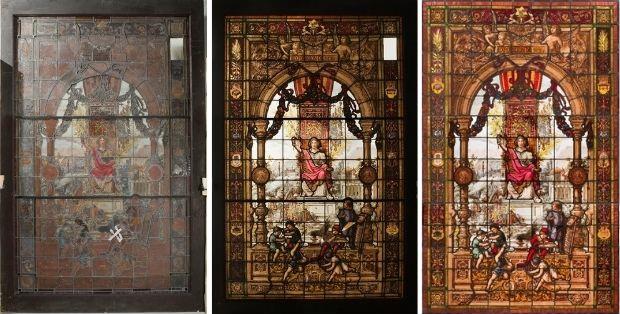
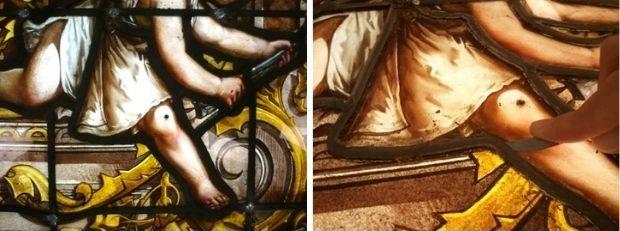
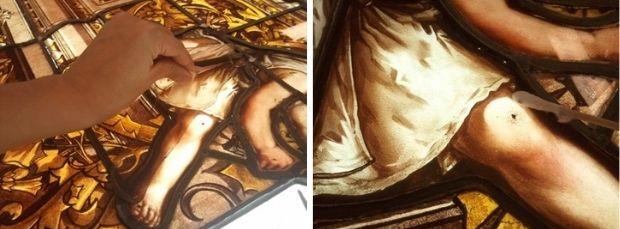

When the glass pieces have been removed, it is important for the edges of the fractures to be perfectly clean in order to apply the glue and stick the pieces together. Like a jigsaw puzzle, all the clean fragments are set in place, and with the aid of small pieces of adhesive tape they are temporarily joined together. Then the adhesive, a liquid epoxy resin, is applied to each fracture. While the resin penetrates due to capillarity, one must observe and keep an eye on the process until it is finished. Depending on the type of resin, the catalyzation process will take more or less time, and it can sometimes last as much as four days.

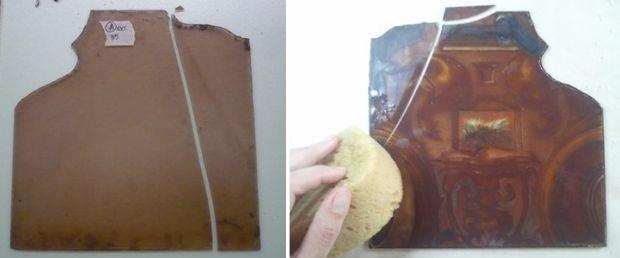
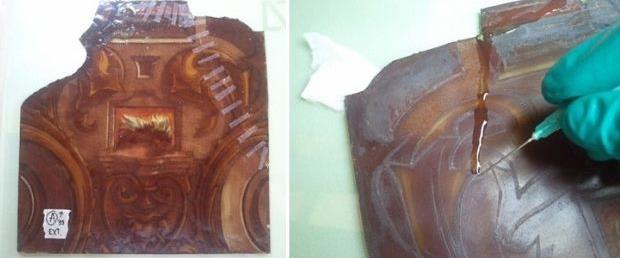

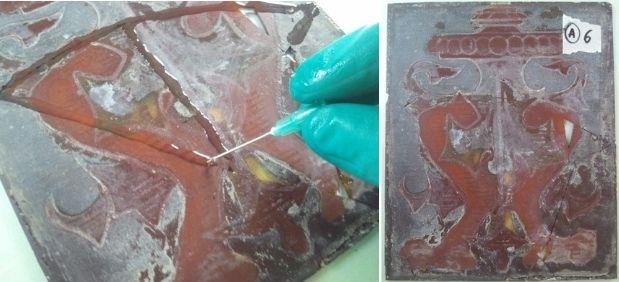
After they have been cleaned and stuck together, the join between the fragments will be more or less visible depending on the glue’s rate of refraction and its compatibility with that of the glass: the closer it is to that of the glass, the less visible the join will be.
With the fragment now stuck together it is time to return it to its original place. This step is the riskiest of all because the empty space where the fragment has to be placed must be just the right size for it to be inserted.

The lead flanges around the edge must be raised as much as possble against the surrounding glass pieces and, when the fragment is finally inside, the process must be repeated, but the other way round: that is, lowering the lead flanges, very carefully without exerting any pressure on the glass pieces, and re-soldering the lead cames at the original points.

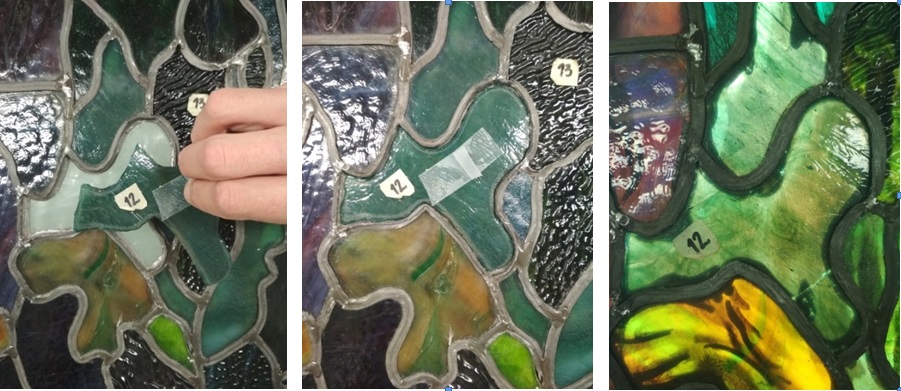
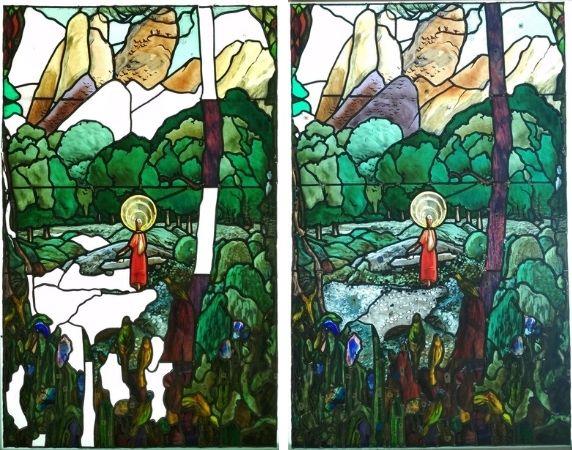
The description of these processes gives us an idea of just some of the interventions that are part of a stained glass window restoration project. Every window has its peculiarities and the conservator-restorer has to deal with different technical challenges. However, on the subject of stained glass windows we are aware that we are dealing with a translucent material and that it was created with the aim of allowing the light to pass through to transform it. This is the reason why every repair we carry out will be determined by this precept. In the restoration laboratory, we work on a light table because we need light to work on the glass. A material such as the resin we use to stick broken pieces of glass together has to be a transparent adhesive so that it will not be visible when the light falls on it. Also, all material that is not a part of the work, not original, and which interferes with its interpretation, will have to be eliminated.
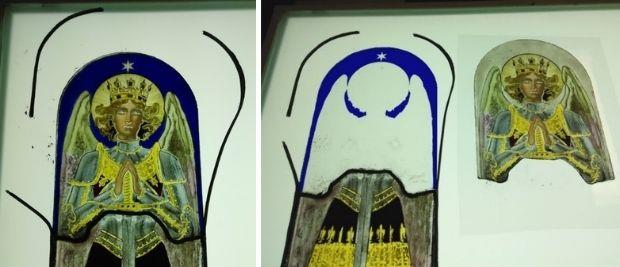
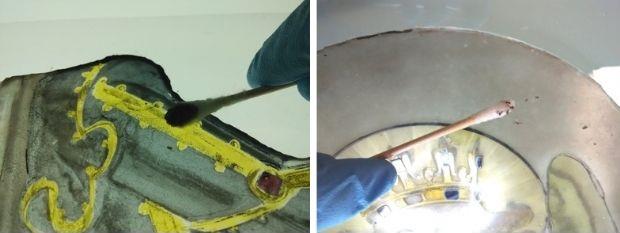
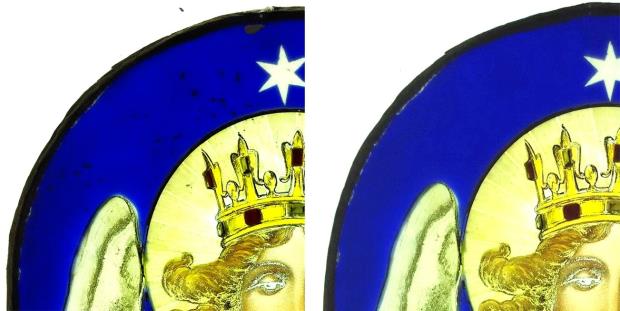
The pictorial patterns created by the stained glass artist can only be perceived thanks to the incidence of the light. Playing with this, the maker’s genius can transform the strips of lead into the lines of a drawing, using grisailles and enamels to draw outlines and shadows or combine different types and colours of glass. The conservator-restorer sets out to preserve the unique and original nature of the piece with a criterion of minimum intervention through an understanding of how it was made and its compositional elements.
A stained glass window is designed to be passed through by the light (sunlight or artificial), which is the fundamental element that gives it life, that allows the image to come out of its frame and be interpreted by our eyes.
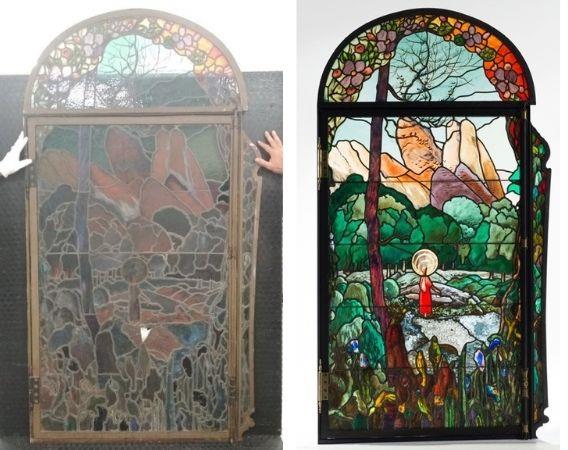
Valeria Mamczynski Guerizoli is a freelance conservator specialized in glass conservation. She studied at the Barcelona School of Glass (Fundació Centre del Vidre de Barcelona) from 2003 to 2005, doing the special subject of Stained Glass Windows and Glass Sculptures. She received her Fine Arts degree from the University of Barcelona in 2008 and between 2010 and 2011 she was awarded an Andrew W. Mellon Research Fellowship grant at the Metropolitan Museum of Art in New York, where she specialized in the conservation-restoration of glass.
Related links
Restoring the colour of the light: stained glass windows in the Museu Nacional d’Art de Catalunya /1
Restauració i Conservació Preventiva







